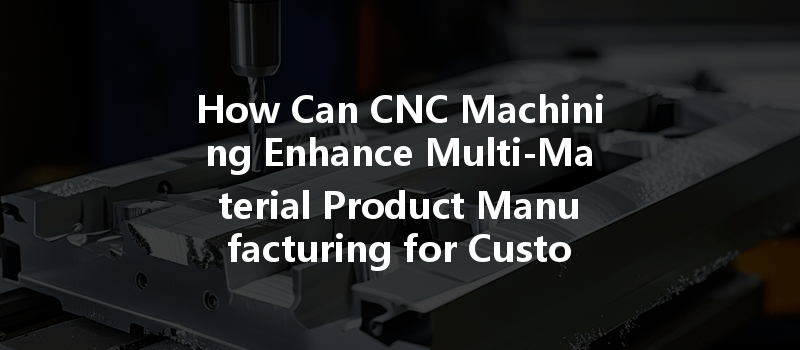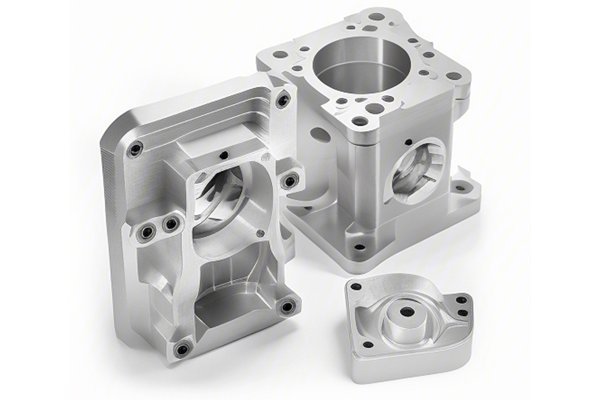Did you know that approximately 75% of manufacturers report that they struggle to produce parts with multiple materials due to the complexities involved? The ability to seamlessly combine different materials in product design has become crucial in industries ranging from automotive to aerospace, where the demand for lightweight, durable, and cost-effective solutions continues to rise. This pressing challenge opens the door for advancements in technology, with CNC (Computer Numerical Control) machining standing out as a transformative solution.
In this comprehensive blog, we will dive deep into how CNC machining enhances the manufacturing of multi-material products, outlining its numerous benefits, applications, and best practices. We’ll explore specific case studies, techniques, and technologies involved, providing a step-by-step approach to overcoming design complexities. Let’s embark on this journey to demystify how CNC machining can revolutionize custom manufacturing processes involving multiple materials.
Understanding CNC Machining
CNC machining is a subtractive manufacturing process that utilizes pre-programmed computer software to dictate the movement of factory tools and machinery. This technology has redefined the precision and efficiency of manufacturing, enabling the production of intricate parts from a variety of materials, including metals, plastics, wood, and composites.
Key Advantages of CNC Machining
The Challenges of Multi-Material Manufacturing
While CNC machining offers substantial benefits, manufacturing multi-material products poses unique challenges:
How CNC Machining Can Overcome These Challenges
When dealing with multi-material designs, careful selection of compatible materials is crucial. CNC machining allows engineers to evaluate alternatives and optimize material properties—an essential factor in the design phase.
Example: Automotive Industry
In the automotive sector, manufacturers often combine aluminum and plastics in car parts to improve fuel efficiency while reducing weight. Using CNC, they can precisely machine each material, ensuring they fit together correctly without weaknesses.
CNC machining’s flexibility means that manufacturers can create specialized tooling that caters to the requirements of each material. This custom approach mitigates challenges posed by using different material properties.
Case Study: Aerospace Components
In aerospace, companies often produce components that require high precision and the combination of strong, lightweight materials such as titanium and carbon fiber. CNC machining allows for specific tooling designs that enable this intricate work.
By integrating additional processes such as additive manufacturing (3D printing) with CNC machining, manufacturers can create multi-material products more efficiently.
Example: Medical Devices

Manufacturers of medical devices are pioneering techniques that employ CNC machining alongside 3D printing to develop complex components composed of plastics and metals such as titanium. The outcomes ensure both lightweight structures and high strength.
Implementing sophisticated quality control systems alongside CNC machining processes ensures that all components meet stringent industry requirements.
Example: Consumer Electronics
In consumer electronics, ensuring the perfect fit between multi-material parts can be essential for functionality. By employing CNC machining with integrated quality checks, manufacturers assure each product adheres to high standards.
Best Practices for Multi-Material CNC Machining
To achieve optimal results in multi-material manufacturing processes, the following best practices should be considered:
Before machining begins, thorough planning is essential. Engineers should collaborate with designers to anticipate potential challenges and determine the best ways to combine different materials.
Using rapid prototyping techniques can reveal design flaws early in the process. CNC machining can create prototypes that help visualize assembly and fit before full-scale production begins.
Choosing appropriate CNC tools for different materials ensures efficiency and creates high-quality finishes. Regular maintenance of tools reduces failures and keeps the production process seamless.
Once components are manufactured, conducting rigorous testing for quality assurance is necessary. Testing methods may include stress analysis, thermal expansion assessments, and adhesion tests, particularly for joints between different materials.
Keeping CNC operators adequately trained in the latest machining practices enhances the quality and efficiency of multi-material product manufacturing. Regular workshops can facilitate skill enhancement aligned with technological developments.
The Future of Multi-Material CNC Machining
As technology continues to evolve, the future of CNC machining in multi-material manufacturing looks promising. Innovations such as smart CNC systems, where machines use AI to optimize operations, may provide even more efficiency and precision.
Anticipated Trends:
As we summarize the core techniques covered, it is vital to recognize the transformative role of CNC machining in the landscape of multi-material product manufacturing. The combination of high precision, flexible design possibilities, and automated efficiencies allows manufacturers to create products that meet industry demands effectively.
Understanding these techniques is crucial for manufacturers and designers looking to remain competitive in a fast-evolving market. The ability to adapt and innovate in the realm of multi-materials not only enhances product performance but also aligns with sustainability objectives and customer expectations.
Worthy of reflection, this blog serves as a guide to embracing the complexities and opportunities within CNC machining, encouraging readers to think critically about how to leverage CNC technology to elevate manufacturing capabilities. As we look toward the future, the potential of CNC machining to reshape the multi-material manufacturing landscape continues to expand—making it essential for industries to harness this potential for better product outcomes.






